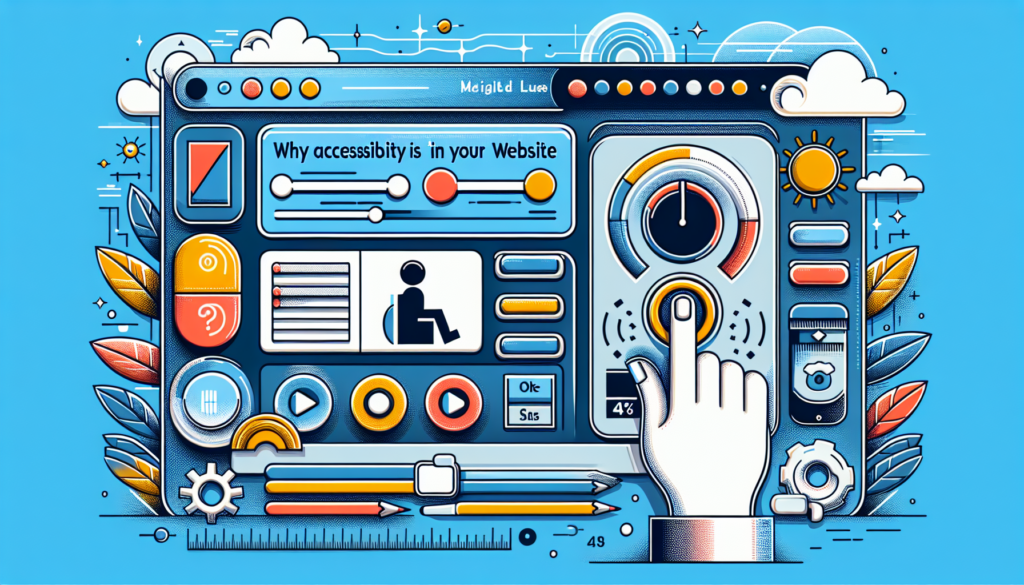Universal access to information and communication technologies has become an ethical and legal imperative in today’s digitized world. Websites, as the main vehicles of the information age, should be designed in such a way that they are available to all users, regardless of their physical, sensory, or cognitive abilities. Hence, web accessibility is not a marginal consideration but a cornerstone for building an inclusive and equitable digital society.
Relevance of Web Accessibility
The digital exclusion of people with disabilities not only prevents these individuals from fully participating in society but also represents a missed opportunity for organizations that overlook a significant market segment. Furthermore, in many jurisdictions, web accessibility is a legal requirement, as stipulated by the Americans with Disabilities Act (ADA) in the United States, or the Web Content Accessibility Directive of the European Union.
Accessibility Principles: According to the Web Accessibility Initiative (WAI) of the World Wide Web Consortium (W3C), web accessibility is based on four fundamental principles, known by the acronym POUR: Perceptible, Operable, Understandable, and Robust. Offering digital experiences that align with these principles maximizes inclusion and facilitates the interaction of all users.
Current Technologies and Practices
Responsive and Adaptive Web Design
A responsive web design fluidly adjusts to different screen sizes, while an adaptive design delivers optimal content based on the user’s context. Both are essential for ensuring that people with visual or motor disabilities can navigate and interact with the site appropriately.
ARIA and Semantic HTML
ARIA (Accessible Rich Internet Applications) tags and the use of semantic HTML improve accessibility by providing context and meaning to interface elements, which is essential for assistive technologies like screen readers.
Color Contrast and Text Size
An adequate contrast between text and background is crucial for users with visual difficulties. Guidelines like the WCAG (Web Content Accessibility Guidelines) provide specific guidelines on appropriate contrast levels. Also, allowing users to change text size is an inclusive practice.
Keyboard Navigation and Input Controls
Many users rely solely on the keyboard to navigate. Ensuring that all functions are accessible through this means is fundamental. Input controls must also be designed to facilitate their use by people with motor or cognitive limitations.
Textual and Multimedia Alternatives
Providing textual alternatives for non-text content and captions for multimedia content are recommended practices to ensure information is accessible to users with auditory or visual impairments.
Accessibility Testing
The implementation of automatic and manual testing is key to identifying and correcting accessibility issues. Tools such as WAVE or Lighthouse, and involving users with disabilities in the testing process, allow for a more comprehensive and realistic assessment.
Comparison with Previous Work
The current state of web accessibility reflects an evolution from early guidelines focused on specific problems to more complex systems addressing the diversity of situations faced by users. Compared to its predecessors, the WCAG 2.1 introduces more demanding and encompassing conformance criteria, reflecting a deep understanding of user needs.
Case Studies
A notable case study is the redesign of the BBC’s website, which involved a massive effort to comply with accessibility guidelines. This project improved not only the experience for users with disabilities but also resulted in a cleaner interface and a better overall experience for all users.
Future and Potential Innovations
Looking ahead, the adoption of Artificial Intelligence (AI) and Machine Learning has the potential to further automate and personalize accessibility. It envisions the capability of websites to adapt their design and behavior in real-time to meet each user’s specific needs. However, this future also poses new challenges regarding data privacy and ethics.
Web accessibility is not a final destination but an ongoing journey towards digital inclusion. As technology advances and our understanding of human diversity deepens, web designers and developers must stay at the forefront, ensuring that no one is left behind in the information society.

